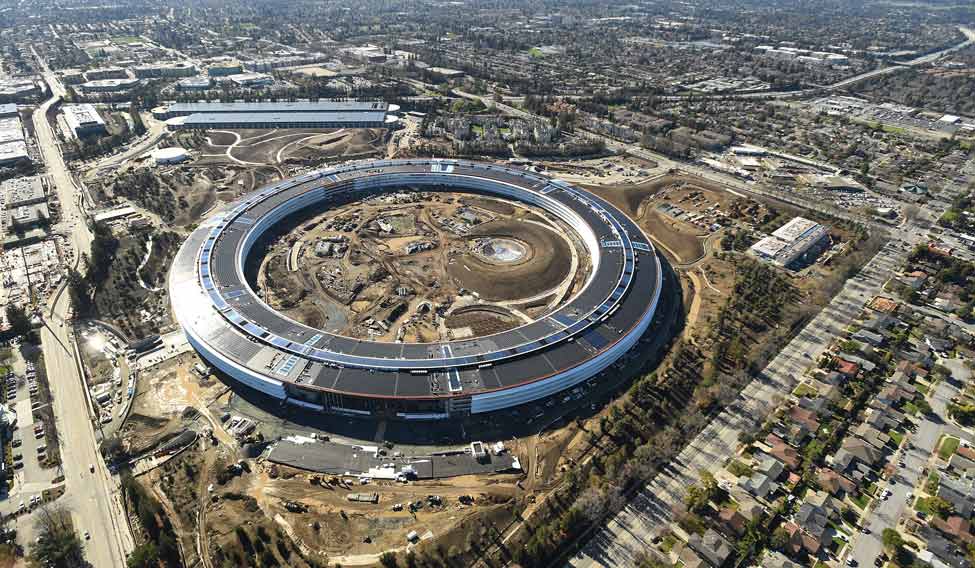When Apple's visionary co-founder Steve Jobs died in October 2011, he left his last work unfinished—a sprawling new Apple Inc campus at Cupertino, California. The new headquarters spread over 176 acres and costing an estimated $5 billion, is set to be unveiled this year.
While the project announced in 2011 was expected to be complete by 2015, the move-in dates have been pushed further. Jobs's stress on perfection in design, and a lengthy approval process by the city of California have been cited as some of the reasons for the delay. Known as the 'spaceship' campus due to its design, the building will accommodate over 14,000 Apple employees. Considering Apple's legendary attention to detail and design, it is no wonder that the gargantuan campus created 13,000 full-time construction jobs and has fallen behind schedule.
The glass wall
What would set apart the Apple campus from its counterparts in the Silicon Valley is certainly its architecture. The main building, which boasts of the world's largest piece of curved glass, resembles a spaceship—a large, airy, glass ring, in sharp contrast to corporate architecture. The circular building will be encased in 3,000 sheets of curved glass—custom-made by German manufacturer sedak—to enable unobstructed view of the beautiful landscape. From Germany, sedak shipped its glass panels weighing up to three tonnes each, in 20-tonne parcels by ship across the Atlantic and through the Panama Canal to California. After being trucked to the campus site, individual glass panels were moved in place with specialised forklifts with suction cups.
Massive green space
While the old property which was owned by Hewlett-Packard was mostly concrete, the new campus envisioned by Jobs will be surrounded by a rich canopy of trees. It is said that the overwhelming green space was inspired by the Stanford University campus. Jobs also wanted to bring back the old feel of open spaces and fruit orchards that were once common in the region before it gave way to lifeless office buildings. Apple had officially confirmed that the number of trees planted will exceed 8,000. Apple's attention to detail can be see even in the way it plans the massive landscape. In nurseries, a hundred miles away from the proposed campus, Apple has been growing more that 4,000 trees in closed wooden boxes. These trees will be shipped to Cupertino, where they will be planted as part of the broader landscaping plan. The best trees already on the site have been retained for replanting. About one-third of the trees on the campus will be evergreen oaks. There will also be 600 fruit trees, along with olive trees and conifers. Besides trees, the green space will also include about 15 acres of natural grasslands. To oversee its tree strategy, Apple had roped in senior arborist Dave Muffly.
iPhone-like toilets
The design intricacies of Apple's spaceship do not end at the exteriors. Every nook-and-cranny has been taken care off—even the loos. Reports suggest that toilets in the campus will take a design cue from Apple's iconic iPhones, with commodes influenced by the iPhone's sleek design. Workers even likened the curve of a rounded corner as inspired by Apple's products, and the elevator buttons seem to resemble the smartphone's Home button. More of such similarities might be on the way considering Apple's Chief Design Officer Jonathan Ive, who is the brain behind the iconic iPhone, iPod, Apple Watch and other products, was also involved in the design of the new headquarters.





